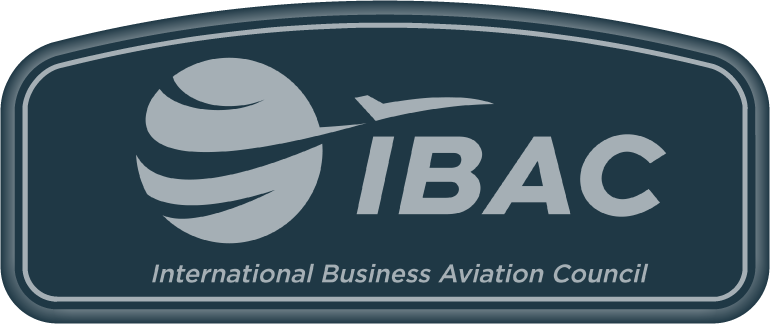Info
&
Insights
Avoiding Common Pitfalls: Top 10 Errors When Developing a Safety Management System
July 17, 2024

Developing a robust safety management system (SMS) is crucial for aviation operators to ensure the highest standards of safety and regulatory compliance. However, the process of establishing an effective SMS can be complex, and operators often encounter common errors that hinder their efforts. In this article, we will explore the top 10 errors operators make when developing a safety management system and provide insights on how to avoid them.
#1 - Lack of Leadership Commitment
One of the most significant errors is insufficient leadership commitment to the SMS. Without the active involvement and support of senior management, the SMS may not receive the necessary resources, attention, and commitment to drive its successful implementation. Leadership should demonstrate a strong safety culture and provide clear guidance and support throughout the SMS development process.
#2 - Inadequate Risk Assessment
Failing to conduct comprehensive and ongoing risk assessments is another common error. Risk assessment is the foundation of an effective SMS, as it identifies potential hazards and assesses their associated risks. Operators should utilize appropriate risk assessment methods, involve relevant personnel, and regularly review and update risk assessments to ensure that all significant risks are identified and mitigated.
#3 - Insufficient Employee Involvement
Neglecting to involve employees throughout the SMS development process is a common mistake. Employees possess valuable knowledge and frontline experience, and their involvement enhances the effectiveness and acceptance of the SMS. Engage employees through regular communication, training programs, safety committees, and feedback mechanisms to ensure their active participation in developing and implementing the SMS.
#4 - Poor Documentation and Procedures
Inadequate documentation and poorly defined procedures can hinder the effectiveness of an SMS. Clear, concise, and user-friendly documentation is essential for employees to understand and follow safety procedures. Develop standardized templates, guidelines, and checklists to ensure consistent documentation practices. Regularly review and update documentation to reflect changes in regulations or operational requirements.
#5 - Lack of Training and Competency
Failing to provide sufficient training and competency assessment for employees is a critical error. Training should align with the SMS requirements and the specific roles and responsibilities of each employee. Implement a comprehensive training program that covers safety policies, procedures, risk management, and reporting protocols. Regularly assess and verify employee competency to ensure a competent and well-prepared workforce.
#6 - Ineffective Safety Reporting and Investigation
A common error is the absence of an effective safety reporting and investigation system. A robust reporting system encourages the reporting of safety concerns, incidents, and near misses. Establish a non-punitive reporting culture and a confidential reporting system that encourages open communication and ensures anonymity if desired. Investigate incidents thoroughly to identify root causes and implement corrective actions.
#7 - Inadequate Performance Monitoring and Measurement
Failing to establish mechanisms for performance monitoring and measurement is a significant error. Metrics and key performance indicators or safety performance indicators (KPIs or SPIs) are essential for tracking the effectiveness of the SMS and identifying areas for improvement. Define relevant KPIs/SPIs, establish data collection processes, and regularly analyze performance trends to evaluate the SMS's effectiveness and implement necessary adjustments.
#8 - Insufficient Communication and Awareness
Neglecting to effectively communicate and raise awareness about the SMS within the organization is a common mistake. Ensure that all employees are aware of the SMS, its objectives, and their roles and responsibilities. Utilize various communication channels, such as meetings, newsletters, and intranets, to provide regular updates, share safety-related information, and reinforce the importance of safety in daily operations.
#9 - Lack of Continuous Improvement
Failure to foster a culture of continuous improvement is an error that limits the SMS's long-term effectiveness. Encourage the identification and implementation of corrective actions based on safety data analysis, audits, and employee feedback. Regularly review and update the SMS to reflect changes in regulations, lessons learned, and emerging industry best practices.
#10 - Inadequate Management of Change
Overlooking the importance of managing change effectively is a common error. The SMS should be adaptable to organizational changes, such as new processes, equipment, or personnel. Implement a structured change management process that identifies potential impacts on safety, assesses associated risks, and ensures appropriate integration of changes into the SMS.
Developing an effective safety management system requires careful attention to avoid common errors. By addressing leadership commitment, risk assessment, employee involvement, documentation, training, reporting, performance monitoring, communication, continuous improvement, and change management, operators can strengthen their SMS and enhance safety performance. Investing time, resources, and proactive measures in the development and implementation of the SMS will result in a robust safety culture, regulatory compliance, and a safer aviation operation.
###





